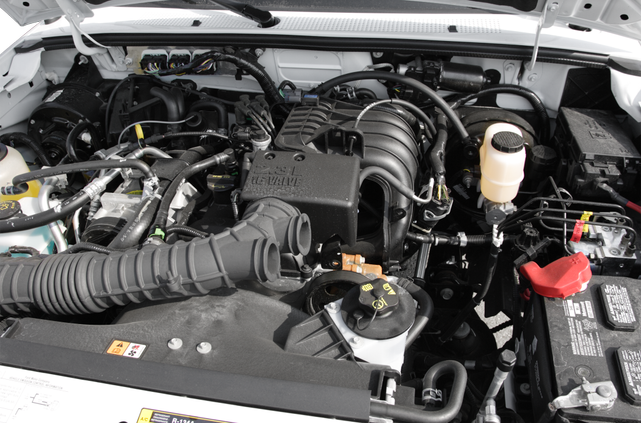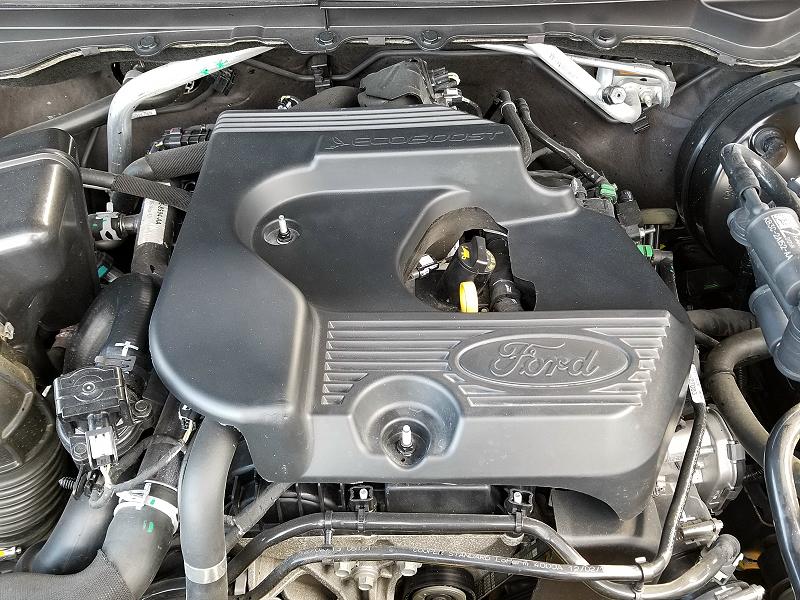Recognizing the Basics of Automobile Engines: Features, functions, and kinds

Introduction of Automobile Engines
An automobile engine works as the heart of an automobile, converting gas into mechanical power to thrust it onward. This intricate system makes up different elements that operate in unison to ensure optimal efficiency and efficiency. The essential operation of a vehicle engine includes the inner combustion procedure, where gas and air are mixed, fired up, and removed to produce power.
The engine's layout can considerably influence its performance, gas effectiveness, and exhausts. Trick parts include the cylinder block, pistons, crankshaft, and camshaft, each playing an essential duty in the engine's total feature. The cylinder block houses the cyndrical tubes where combustion takes place, while the pistons transform the eruptive energy from combustion right into linear activity. This activity is after that changed into rotational power by the crankshaft, allowing the vehicle's wheels to transform.
In enhancement to these components, engines usually make use of numerous systems such as fuel injection, ignition, and cooling systems to enhance efficiency and longevity. Comprehending the fundamental auto mechanics of automobile engines is essential for carrying out and diagnosing problems maintenance, ultimately adding to the vehicle's dependability and performance gradually.

Sorts Of Vehicle Engines
Cars and truck engines can be categorized into several kinds based upon their design, fuel type, and operational concepts. 2.2 ford ranger engine. One of the most common categories include inner combustion engines (ICE), electrical engines, and hybrid engines
Internal combustion engines, which can be more separated right into fuel and diesel engines, run by igniting a fuel-air mixture to produce power. Gas engines are normally lighter and smoother, while diesel motor are much more fuel-efficient and offer higher torque.
Electric engines make use of electrical energy stored in batteries to power an electric motor, providing instantaneous torque and zero emissions during operation. As technology developments, electrical vehicles (EVs) are significantly coming to be preferred for their environmental advantages and lower running prices.
Crossbreed engines combine elements of both interior combustion and electrical engines, allowing for versatile source of power and improved gas effectiveness. They can operate in various settings, utilizing either the gasoline engine, the electric motor, or both simultaneously.
Each type of engine has unique advantages and disadvantages, influencing their application in various automobile kinds and market segments, from portable cars and trucks to heavy-duty trucks. Understanding these types is vital for making informed decisions pertaining to vehicle choice and performance assumptions.
Engine Functions Explained
Understanding engine features is vital for realizing exactly how vehicles run efficiently. At the core of any type of inner burning engine exists the basic procedure of transforming gas into mechanical energy. This procedure begins with the intake stroke, where air and fuel are drawn into the combustion chamber. Following this, the compression stroke compresses the Your Domain Name air-fuel blend, increasing its temperature level and stress.
The ignition happens following, stiring up the mix and producing a rapid growth of gases. This pressure drives the piston down throughout the power stroke, which eventually translates right into the rotational movement of the crankshaft. The exhaust stroke after that eliminates the spent gases from the chamber, giving way for a new cycle to commence.
In enhancement to these primary functions, engines additionally include systems that take care of cooling and lubrication, making certain ideal functional temperature levels and decreasing rubbing in between moving components. This complex interplay of features makes it possible for the engine to produce the power necessary for vehicle propulsion while maintaining performance and reliability. Recognizing these features provides important understanding right into the intricacies of automobile design and boosts the ability to detect and resolve engine-related concerns successfully.
Key Engine Attributes
Engine style incorporates a number of vital features that significantly influence toughness, efficiency, and performance. One of the most crucial facets is the engine setup, which includes inline, V-type, and level styles. Each configuration impacts the engine's power, balance, and dimension result, thus impacting total lorry characteristics.
One more important feature is the engine displacement, referring to the complete quantity of all cylinders. Larger displacements typically produce even more power however might compromise fuel effectiveness. Engine products also play a critical duty; lightweight and high-strength materials, such as light weight aluminum and magnesium alloys, boost performance without adding extreme weight.
The sort of fuel shot system utilized-- such as multi-port or direct shot-- affects burning effectiveness and discharges. Turbo charging and turbocharging are attributes that boost engine performance forcibly extra air into the burning chamber, enhancing power result without substantially enhancing engine size.
Finally, the presence of advanced engine administration systems enhances fuel-air combination and ignition timing, contributing to smoother operation and much better fuel economic climate. Collectively, these functions define an engine's abilities, establishing the structure for its performance and durability in an affordable automotive landscape.
Upkeep Tips for Engines
Appropriate engine maintenance is vital for guaranteeing optimum efficiency and durability, as ignoring regular care can bring about substantial problems down the line. To preserve your engine successfully, start with regular oil modifications, usually every 3,000 to 7,500 miles, depending on the type of oil utilized. Fresh oil lubes engine parts, lowering friction and wear.
Furthermore, keeping an eye on coolant degrees is crucial to avoid getting too hot. Ensure that the coolant is topped up and remains in great condition to maintain efficient temperature level law. Consistently change and inspect air and gas filters, as stopped up filters can prevent air movement and gas delivery, compromising engine effectiveness.
Moreover, take note of ignition system and ignition systems. Malfunctioning or worn ignition system can lead to misfiring and minimized efficiency. Inspecting the battery terminals and connections for corrosion is additionally crucial, as a weak battery can impact engine beginning.

Final Thought
In recap, an extensive understanding of automobile engines encompasses different kinds, functions, and essential features that significantly influence lorry efficiency. Inner combustion engines, along with electrical and hybrid choices, show varied devices for power conversion. 2.2 ford ranger engine. Acknowledging the essential functions, such as consumption and exhaust cycles, together with essential engine attributes like arrangement and fuel injection systems, equips vehicle proprietors with the knowledge essential for reliable upkeep and operation, inevitably enhancing lorry long life and effectiveness
A car engine offers look at this website as the heart of a lorry, transforming fuel into mechanical energy to propel it ahead. The basic procedure of an auto engine entails the interior burning site process, in which fuel and air are blended, sparked, and gotten rid of to develop power.
Frequently evaluate and change air and fuel filters, as stopped up filters can prevent air movement and fuel delivery, endangering engine efficiency. - 2.2 ford ranger engine
In summary, a detailed understanding of vehicle engines includes numerous types, functions, and vital functions that substantially affect automobile performance. Acknowledging the crucial functions, such as consumption and exhaust cycles, along with crucial engine attributes like setup and fuel injection systems, equips car proprietors with the knowledge necessary for effective maintenance and procedure, ultimately enhancing lorry long life and performance.
 Luke Perry Then & Now!
Luke Perry Then & Now! Rick Moranis Then & Now!
Rick Moranis Then & Now! Phoebe Cates Then & Now!
Phoebe Cates Then & Now! Naomi Grossman Then & Now!
Naomi Grossman Then & Now! The Olsen Twins Then & Now!
The Olsen Twins Then & Now!